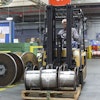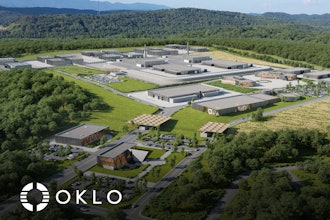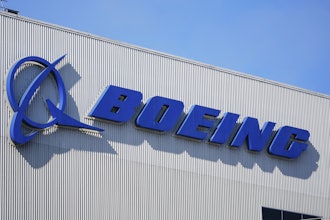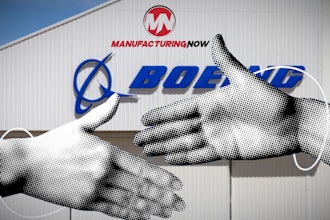While food and beverage companies are expected to deliver more every day with tighter margins, traceability – and having deep knowledge about what is occurring on the plant floor – is more important than ever. Traceability is imperative to avoiding and minimizing quality issues that can result in disastrous product recalls and harm to brand equity.
There are many variables that affect the availability and reliability of data on the plant floor and throughout the supply chain. Fundamentally, every food manufacturing environment contains a mix of automated and manual interactions between equipment and personnel. These production processes may not be fully documented and can include extra steps and resources. As such, they are difficult to track and trace – and difficult to adapt to changing business needs.
Additionally, when detailed HACCP procedures and SOPs are in place, it can be difficult to monitor compliance with them. New operators may not follow SOPs properly – or systems may not be in place that record both automated and manual data. For example, a HACCP procedure may require an operator to verify an oven temperature or, in another case, stop an oven chain if an internal food temperature is not high enough, but the records of the actions may be incomplete.
Electronic work process management offers a way to greatly improve traceability by digitizing and documenting both manual and automated processes – and ensuring compliance with HACCP procedures and SOPs. Electronic work process management captures the Manual Data Entry that is necessary on the plant floor and connects it with equipment, people and systems. Food manufacturers can track both manual and automated processes in real time, capturing data and creating a critical infrastructure for taking immediate corrective action. In the event of a recall, historic production data is available on batches/lots, equipment set up, validated calibrations, operators and more. Furthermore, companies can not only minimize the impact of a recall - but also minimize the opportunities for having a recall in the first place by improving production processes.
Digitizing production
By definition, work process management – or workflow – is the automation of a process during which information or tasks move from one participant to another for action, according to a set of rules. As an enabling tool, industrial workflow software provides a system for improving and optimizing production practices – through power users taking advantage of authoring, execution and analysis capabilities. This industrial software takes a production “flowchart” and digitizes it across a web of people, systems and equipment, operating in a time window of seconds and subseconds.
Just as food manufacturing has a broad range of work processes, industrial workflow software can solve a broad spectrum of challenges. Workflows can involve basic tasks such as asking an operator to check tank levels every hour, to managing an entire production process, to orchestrating data transformations between ERP and MES. The workflow system – and its reporting – can touch almost all production personnel, including quality managers and quality technicians, maintenance, operations supervisors, industrial engineers and more.
Use cases for work process management vary from company to company. However, many food manufacturers face common production challenges related to traceability. A few sample uses cases include:
Electronic work instruction/digitized SOPs: Instead of using a static piece of paper or a binder at their station, operators follow SOPs and work instructions through industrial workflow. They accomplish their work with fewer errors – and the system records the information. Industrial workflow electronically guides operators through step-by-step instructions. Companies can ensure production complies with defined processes – with validated entry – capturing data for analysis and historical records. The system can analyze in real time and document the operator, shift, batch, equipment settings and validated calibrations, equipment serial numbers, product conditions, and more. This use case decreases costs by reducing errors and waste, and increases compliance by enforcing SOPs.
Quality hold: non-conformance, rework and quarantine: Automatically trigger non-conformance workflows to manage assignments, inventories, rework, quarantines and recalls. The system guides operators through supplemental testing, inspecting, rework and re-dispositioning. Food manufacturers can bracket product batches/lots suspected of sharing a quality problem – and manage and track the process of testing and assessing bracketed product for conformance and then releasing, splitting, rejecting or reworking. This use case closes the loop on non conformance, reducing costs of product waste and decreasing shipping delays by driving non conformance to fastest resolution.
HACCP monitoring procedures: Automate and manage HACCP monitoring, integrating production work processes with real-time QA. Companies can electronically monitor and record production work processes and compliance, taking immediate corrective action when compliance issues occur. Teams can ensure that operators are diligent about HACCP procedures and respond faster to HACCP problems.
Alarm management and corrective action: Automatically and dynamically respond to production problems and events, monitoring alarms from multiple systems on the plant floor. The system can send tasks to people or other systems to correct for alarms in real time – and escalate as needed. Additionally, companies can minimize nuisance alarms and ensure proper action on critical alarms.
QA plan and sampling: Food manufacturers can automate and manage the QA plan and sampling, enabling more sophisticated, situation-driven sampling, testing and inspection routines. The industrial workflow system can automatically trigger QA sampling based on production events or elapsed time. This methodology connects operator work instructions with production actions and real-time quality data. This use case can increase quality through improved product consistency and decrease costs of waste.
Troubleshooting trees: In addition to extensive production task management, industrial workflow also offers a basis for decision wizards or troubleshooting trees. At a major global food company, teams have now documented troubleshooting trees for the first time. These trees capture the knowledge of workers due to retire before employee attrition affects production. Industrial workflow digitizes the trees into decision wizards that walk newer employees through processes – related to both equipment repair or in-process product remediation. The digitized decision trees help guide the newer workers on what corrective actions to take under certain circumstances. For example, if an operator knows an internal product temperature is too low, the system might determine that the oven temperature is set correctly and troubleshoot for the operator to slow or stop an oven chain – all the while recording settings and actions.
Production set up: To speed production and improve quality, industrial workflow can guide operators through the steps to set up a machine or recipe properly. The system walks users through set up, provides documentation and records the time it takes for operators to move through each step. Additionally, teams achieve historical records that verify proper machine or recipe set up, including calibrations and serial numbers connected to specific batches, prior to raw materials usage.
In reviewing the use cases, industrial workflow spans production challenges from set up to managing entire production processes and communicating between many different systems. While demands continue to increase on food manufacturers, electronic work process management offers a flexible, cost-effective tool for improving traceability – and achieving a foundation for sustainable advantage.
For more information about work process management, contact Greg Millinger at [email protected] or Alicia Bowers at [email protected].


















